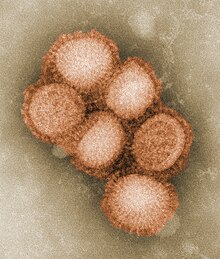WHO states H1N1 swine flu world's most dominant virus
Friday, November 6, 2009
The United Nations World Health Organization (WHO) stated that the H1N1 virus, more commonly known as swine flu, has become the dominant flu strain in the world.

In a briefing with reporters Thursday, WHO Special Pandemic Influenza Advisor Keiji Fukuda said the virus has been particularly active in the Northern Hemisphere in recent months. He added that he expects the trend to continue through the winter months, with more severe cases and even deaths.
Fukuda said the vaccine currently in use in some 20 countries around the world remains effective and safe, and that no rare or dangerous side effects have been reported.
"East Asia is one of the parts of the world where seasonal influenza viruses have remained in reasonably high circulation. But even in that part of the world, the pandemic virus is becoming dominant," Fukuda commented.
He noted that it was difficult to predict the activity of the virus. "We really are not going to know what the future is going to bring, and so the main focus of our effort here is [...] what steps are needed to make sure countries are as prepared as possible to deal with disease levels," he said.
The H1N1 virus differs from the normal seasonal flu in that it has persisted during the summer months and affected relatively healthy people under the age of 65. The WHO says most people recover without hospitalization, although Fuduka pointed out that people with severe health complications and pregnant women were most at risk.
The World Health Organization has declared the swine flu outbreak a pandemic. As of October 25, 2009, the WHO says there have been more than 440,000 laboratory confirmed cases of H1N1 influenza and more than 5,700 deaths reported to the UN agency.
Sources
- "WHO Says H1N1 World's Dominant Flu Virus" — VOA News, November 5, 2009
- "H1N1 is now world's dominant flu virus, World Health Organization says" — CNN, November 5, 2009
- Agence France Presse. "WHO urges people to maintain guard over swine flu" — France 24, November 5, 2009
